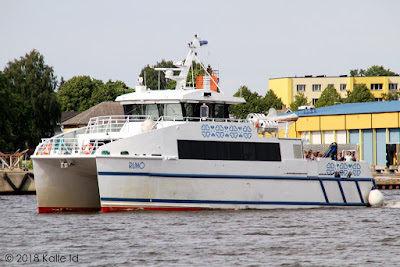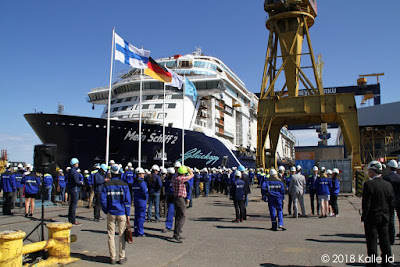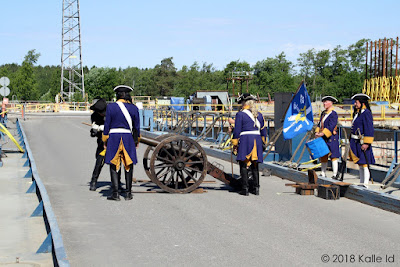This time around, we're going to have just one photo. But of a ship that I think is very interesting: TT-Line's ropax
Peter Pan, which was recently lengthened.
Peter Pan
IMO 9217242
Built 2001, SSW Fähr- und Spezialschiffbau Bremerhaven, Germany
Tonnage 44 245 GT
Length 219,95 m
Width 29,50 m
Draugth 6,20 m
744 passengers
646 passenger berths
3 670 lanemetres
5 MaK diesels, combined 28 392 kW
2 Siemens-Schottel Propulsor azimuthing pods
2 bow thrusters
Service speed 18,5 knots
This particular
Peter Pan is the fifth ship with that name in the fleet of TT-Line. It was contracted in 1999, together with the sister ship
Nils Holgersson from SSW Fähr- und Spezialschiffbau in Bremerhaven, Germany. Unusually for ferries, the ships were specified with azimuthing podded propulsion units (Siemens-Schottel Propulsors, or SSP for short, rather than the better-known ABB Azipods) rather than conventional propellers and rudders. These proved unreliable during the construction process, with the
Nils Holgersson delayed by five months and the
Peter Pan by three. Thus, the
Peter Pan entered service on the Trelleborg-Travemünde route in November 2001. Shortly afterwards the ship collided with a pier in Trelleborg and had to be docked again, this time at Lübecker Flender-Werft. At the same time, the ship was transferred from the Bahamian to the Swedish register.
The SSP pods continued to prove less reliable than could have been hoped for once the ship was in service; Fakta om Fartyg lists four separate occasions between 2004 and 2006 that the ship had to be drydocked for swapping out the pods. After that the problem appears to have abated and the ship's career has been less eventful, apart from another collision in Trelleborg in 2013.
In December 2017, the
Peter Pan sailed to the German Dry Docks in Bremerhaven for an expansive rebuilding, where the ship was lengthened from 190 to 219 metres, while the aft cargo deck was expanded, a new bulbous bow was fitted and – more than a bit strangely – the tip of the bow was sliced off. The rebuilding was somewhat delayed, but in the end the ship re-entered service at the end of May 2018.
The photo below shows the Peter Pan at the German Dry Docks in Bremerhaven while undergoing the great rebuilding on 19 April 2018. Photographed from onboard the Norwegian Bliss. As always, click on the image to see it in larger size.
 |
| Alas, getting a shot without the various buildings in the foreground was not an option. Still, I think this is an interesting photo so you will just have to bear with me. |
Kships will return.











